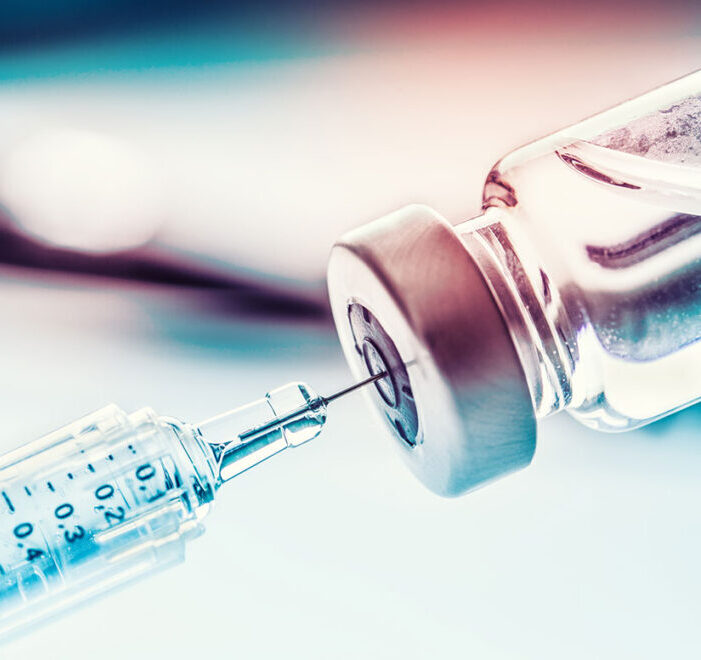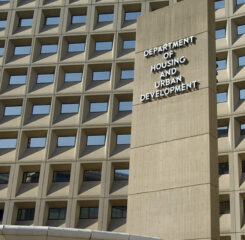House Build Back Better Markups Lead to Historic Opportunities to Expand Long-term Care Staffing and Enhanced Medicaid HCBS Services
House Committees have started to draft their parts of the $3.5 trillion budget reconciliation package. Mark-ups began on September 10 and are expected to conclude by September 15, when they will be sent to the House Budget Committee to compile into one proposal.
The following are highlights of the provisions included in the reconciliation packages considered by the House Ways and Means Committee, the Education and Labor Committee and the Energy and Commerce Committee. The proposals provide historic opportunities to support workers in long-term care settings, and address health care professionals’ recruitment and retention. Funding also includes measures that provide increased support to address Medicare coverage and critical resources needed to enhance Medicaid home and community-based services (HCBS).
House Ways and Means Committee
Markups for the Build Back Better Act began in the House last week. On Thursday, September 9, the Ways and Means Committee voted to advance proposals that established a universal paid medical and family leave program and the healthcare related proposals. This week their reconciliation mark-ups will address portions of the proposal that raise taxes and finance investments needed to lower health care cost, extend tax cuts for workers and families, create jobs and encourage economic and affordable housing development.
The Committee approved proposals:
- Expand Medicare coverage to include dental, vision, and hearing benefits, quickly getting new vision and hearing services to beneficiaries in 2022 and 2023, respectively, to eliminate cost and coverage barriers to this care;
- Expand workplace supports by providing up to 12 weeks of universal paid family and medical leave for all U.S. workers;
- Invest in child care access and equity by allocating funding for the construction and remodeling of child care facilities to make them even safer and more aligned with public health guidelines; and raising the wages of child care workers, who currently earn a median wage of $12.24 per hour and often live in poverty.
The Committee also approved historic proposals relating to older Americans, specifically those that seek to protect elderly and people with disabilities in nursing homes by:
- Reauthorizing elder justice programs that increase support for state and local Adult Protective Services offices and long-term care ombudsman programs to better prevent elder abuse, neglect, and exploitation;
- Addressing the staffing shortages in long-term care facilities by allocating $392 million, from FY 2022 through 2025, for Nursing Home Worker Training Grants. These funds should be used for long-term care workforce recruitment and retention, which includes wage subsidies, and student loan repayment or tuition assistance and providing access to childcare, and paid leave.
- Improving the accuracy and reliability of the data collected in Skilled Nursing Facilities (SNFs) and strengthening the federal understanding of care quality and reimbursement, by requiring a study on the appropriateness of minimum staff to resident ratios of registered nurses, and recommendations for minimum staffing ratios for CNAs and nurses.
The Committee also voted to advance the provisions under the Pathways to Health Careers Act, that would address workforce shortages and fill in-demand jobs by:
- Allocating $425 million, over five years, to reauthorize the Health Profession Opportunity Grant (HPOG) Program, which expands the health care job training program for allied and behavioral health professions to make it available nationwide. The program would increase opportunities to train low-income recipients for jobs as CNAs, Home Health Care Aides and RNs, and provide applicants with support services such as transportation and childcare assistance. The competitive grants would also allow SNFs and nonprofit organizations to administer programs.
Education and Labor Committee
The House Committee on Education and Labor completed its portion of the Build Back Better Act on September 10, 2021. It will invest $761 billion to lower the cost of childcare and education, help Americans secure good-paying jobs and increase support for our nation’s children. The investment will help expand job training and workforce development programs, which includes:
- Allocating $1.5 billion, until FY 2031, for new competitive grants to recruit and train direct care workers. Eligible entities include nonprofit organizations with experience in aging, disability, and those that support the rights and interest of direct care workers. The ability to raise wages and create training opportunities is also an eligible use of funds.
- Allocating $5 million, until FY 2026, to establish a “Technical Assistance Center for Supporting Direct Care and Caregiving,” within the Administration for Community Living, to carry-out technical assistance for supporting direct care workforce recruitment and training.
Energy and Commerce Committee
The House Energy and Commerce Committee began their mark-up of the budget reconciliation bill on September 13. The Committee also makes significant investments in opportunities for making health care more affordable, lower the price of prescription drugs. It also provides historic investment in the expansion of Medicare – additional dental, hearing and vision benefits for seniors, and critical investments to expand access to Medicaid home and community-based services (HCBS). LeadingAge is also seeking an increase for enhanced Medicaid funding to support staffing and quality care in nursing facilities.
During the mark-up the Committee will provide critical funding and investments by:
- Allocating $190 billion to expand HCBS services for older adults and people with disabilities, as specified in the Better Care Better Jobs Act. While the allocation is lower than the $400 billion funding level supported by the Biden Administration, Senate Democrats and LeadingAge, under this proposal States would be required to develop “HCBS infrastructure improvement plans” and be provided with a permanent 10 percentage-point increase in their federal matching rates. It would also strengthen the direct care workforce recruitment and retention opportunities by improving provider payment rates and giving states the resources to ensure the rate increases are passed through to workers’ wages.
- Making permanent the Money Follows the Person and the spousal impoverishment programs;
- Permanently lowering prescription drug prices, and require HHS to annually negotiate with drug manufacturers.
- Invest $35 billion to help rebuild public health departments and the modernization of health care facilities. And, expand capacity for training primary health care providers; and
- Closing the Medicaid coverage gap, to allow 4 million uninsured Americans to gain access to coverage.

Most Recommended
November 08, 2024
 HOTMA: New Rules for Housing
HOTMA: New Rules for Housing
November 06, 2024
 Colleagues on the Move, November 6, 2024
Colleagues on the Move, November 6, 2024
November 06, 2024
 Analysis: What Does the Final CY2025 Home Health Rule Include?
Analysis: What Does the Final CY2025 Home Health Rule Include?
October 29, 2024
Katie Smith Sloan Urges Members to Build a Movement, Take Action
Recently Added
December 13, 2024
CAST Members in the News
December 13, 2024
a2 Pilot Awards Open for AI-based Healthy Aging Projects
December 13, 2024
HUD Finalizes 30-Day Eviction Notification Rule
December 12, 2024



